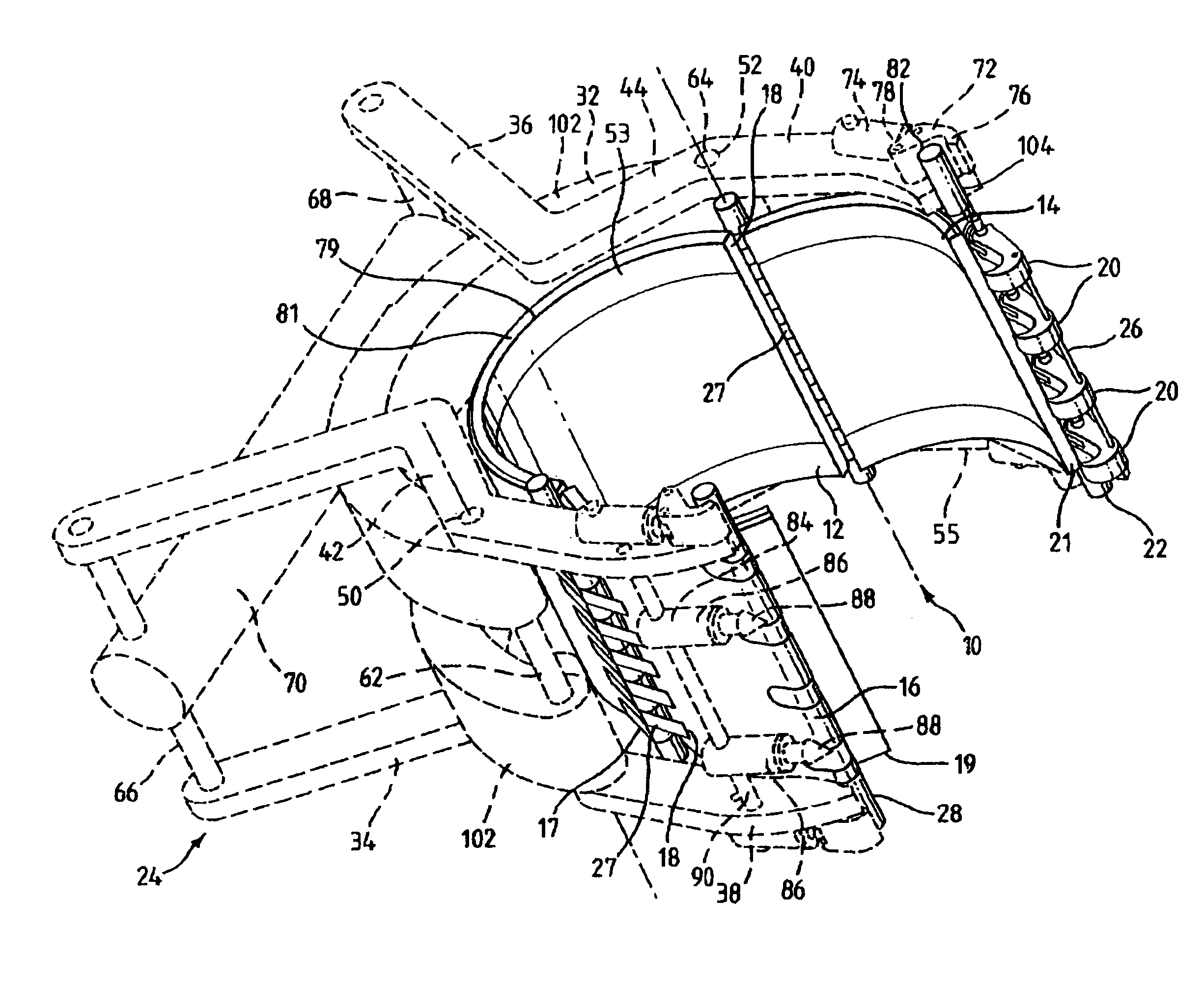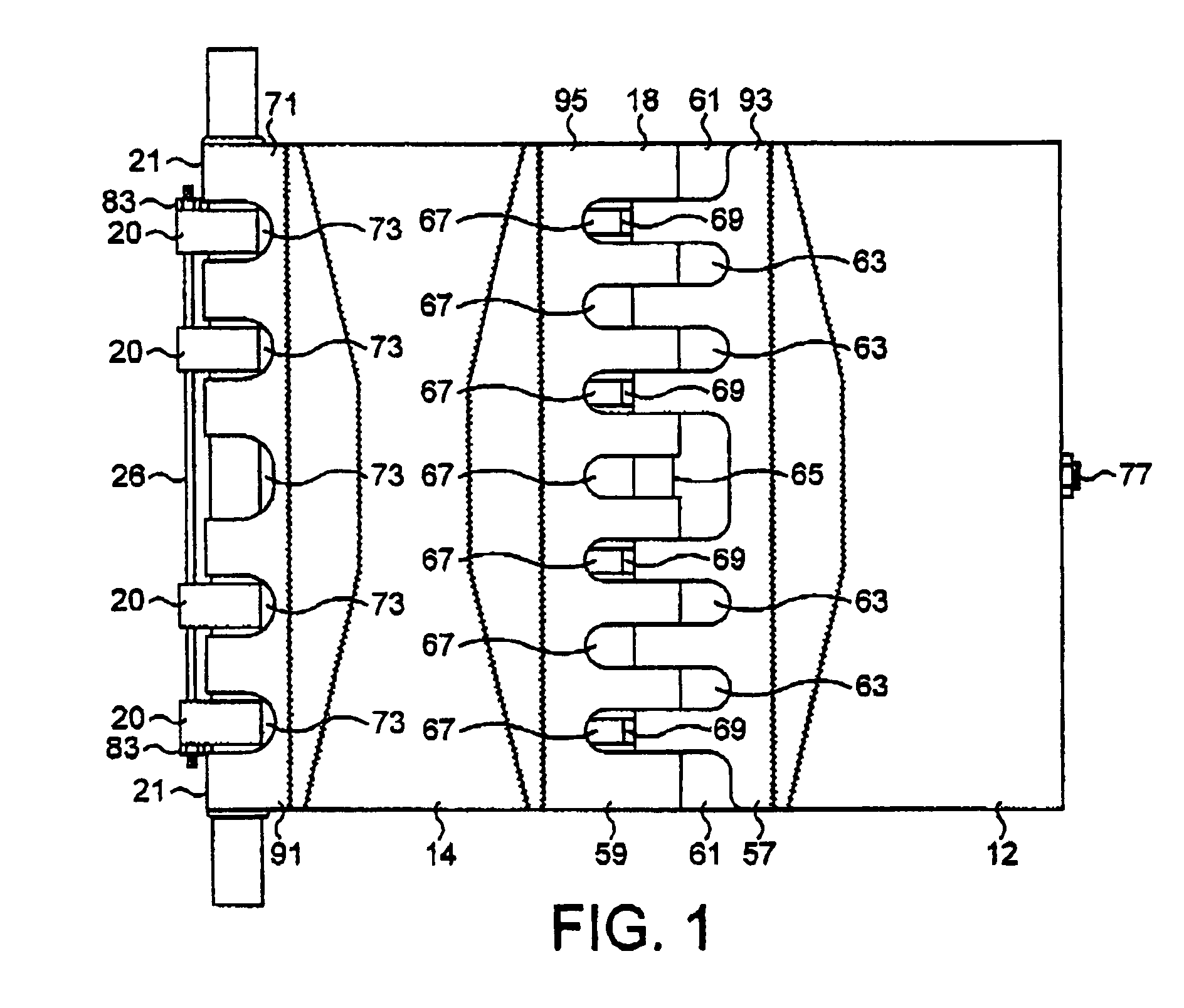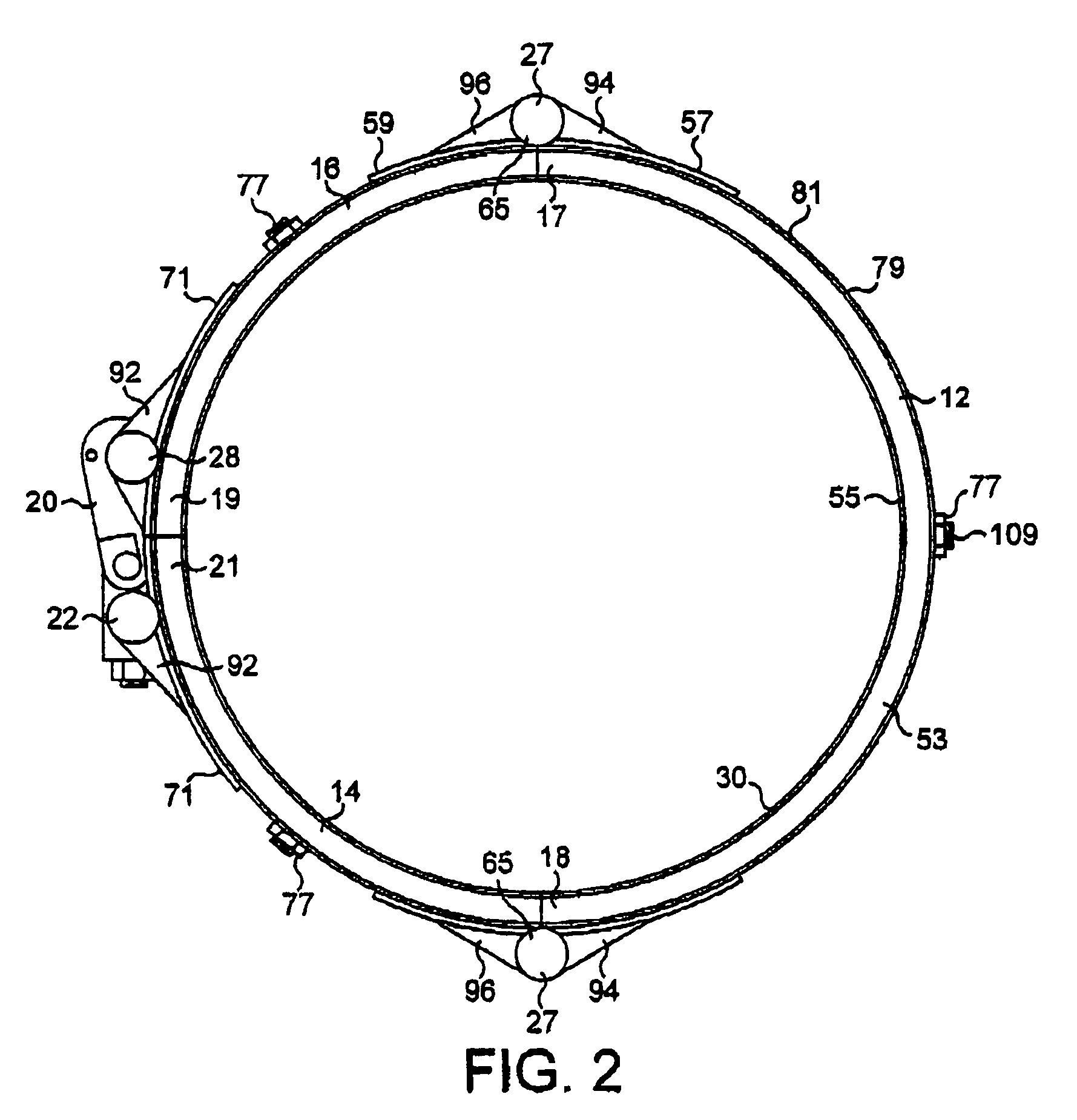Apparatus for repairing an underwater pipe
a technology for underwater pipes and accessories, applied in the direction of pipe laying and repair, application, pipe elements, etc., can solve the problems of further cost incurred through pipeline shut down, pipe damage, and inability to withstand such loads, and achieves quick and simple installation, small overall clamp dimension, and strong repair
- Summary
- Abstract
- Description
- Claims
- Application Information
AI Technical Summary
Benefits of technology
Problems solved by technology
Method used
Image
Examples
Embodiment Construction
[0033]Referring to FIGS. 1 to 3, a pipe clamp 10 is shown comprising three part-cylindrical portions 12,14,16 hinged together along adjacent longitudinal edges 17,18. A first of the part-cylindrical portions 12 is hinged to a respective one of the other two part-cylindrical portions 14,16 along each of its longitudinal edges 17,18 by hinges 27. Each of the other part-cylindrical portions 14,16 is hinged to the first part-cylindrical portion 12 on one longitudinal edge 17,18, its other longitudinal edge 19,21 is free. The first part-cylindrical portion 12 subtends one half of the circumference of the pipe clamp 10. The other two part-cylindrical portions 14,16 each subtend one quarter of the circumference of the, pipe clamp 10, when the pipe clamp 10 is in a closed position (as shown in FIGS. 1 to 3).
[0034]The part-cylindrical portions 14,16 are movable about the hinge axes 27 towards and away from one another between an open position in which the free longitudinal edges 19,21 are sp...
PUM
 Login to View More
Login to View More Abstract
Description
Claims
Application Information
 Login to View More
Login to View More - R&D
- Intellectual Property
- Life Sciences
- Materials
- Tech Scout
- Unparalleled Data Quality
- Higher Quality Content
- 60% Fewer Hallucinations
Browse by: Latest US Patents, China's latest patents, Technical Efficacy Thesaurus, Application Domain, Technology Topic, Popular Technical Reports.
© 2025 PatSnap. All rights reserved.Legal|Privacy policy|Modern Slavery Act Transparency Statement|Sitemap|About US| Contact US: help@patsnap.com



